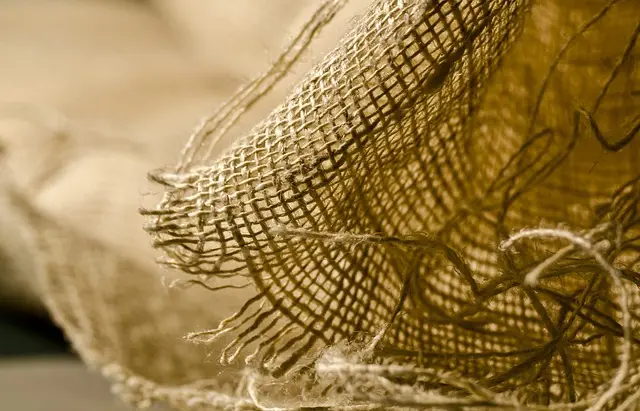The article discusses Red Maeng Da and Red Bali Kratom, two natural remedies from the kratom tree that are commonly used for joint pain relief. Red Maeng Da is known for its high levels of 7-hydroxymitragynine, which can provide strong analgesic effects and is favored for its stimulating properties that maintain mental clarity. Its Southeast Asian origins contribute to its reputation among those with chronic joint discomfort. In contrast, Red Bali Kratom offers a more balanced alkaloid profile with both pain-relieving and calming effects, which can be beneficial for individuals with conditions like arthritis who also experience stress or anxiety alongside their pain. Users tend to prefer one strain over the other based on personal preference and desired effect, with Red Maeng Da being more energizing and Red Bali providing a soothing experience. Both strains contain similar active ingredients but differ in their specific alkaloid concentrations, which affect their analgesic properties and overall impact. When choosing between Red Maeng Da and Red Bali Kratom for joint pain management, considering individual needs and responses is crucial. The comparison underscores the importance of personal preference in selecting the right kratom strain for effective joint discomfort relief.
exploring the potential of natural remedies, this article delves into the comparative effects of Red Maeng Da and Red Bali Kratom for joint pain relief. We will dissect their alkaloid profiles and efficacy, providing a comprehensive analysis of these two popular strains. Additionally, we’ll offer insights from user experiences to guide your choice between Red Maeng Da Kratom vs. Red Bali for optimal joint comfort. Join us as we navigate the nuanced world of kratom and its role in pain management.
- Exploring Red Maeng Da vs. Red Bali Kratom for Effective Joint Pain Relief
- Comparing the Alkaloid Profiles and Pain-Relieving Efficacy of Red Maeng Da and Red Bali Kratom Strains
- User Experiences: A Look at Real-Life Outcomes When Choosing Between Red Maeng Da and Red Bali for Joint Comfort
Exploring Red Maeng Da vs. Red Bali Kratom for Effective Joint Pain Relief

When seeking relief from joint pain, individuals often explore natural alternatives such as Red Maeng Da and Red Bali Kratom, two popular strains derived from the Mitragyna speciosa tree. Red Maeng Da Kratom is renowned for its potent alkaloid profile, which may offer substantial analgesic effects. Its distinct leaves, originating from the dense forests of Southeast Asia, have made it a go-to option for many who experience chronic joint discomfort. The strain’s effectiveness is often attributed to its high concentration of 7-hydroxymitragynine, a compound that may enhance painkilling properties.
In contrast, Red Bali Kratom is another potent strain, named for its origins from the islands of Bali in Indonesia. This strain is celebrated for its fine vein particles and balanced alkaloid content, which may provide a comprehensive approach to joint pain relief. Users often report that Red Bali offers a sense of calm coupled with pain mitigation, which can be particularly beneficial for those suffering from conditions like arthritis or other joint-related issues. Both strains have their unique advantages; however, the choice between Red Maeng Da and Red Bali Kratom for joint pain relief often comes down to personal preference and the specific effects one seeks, as both are derived from the kratom leaf and contain similar active ingredients with some variations in alkaloid levels that may influence their efficacy.
Comparing the Alkaloid Profiles and Pain-Relieving Efficacy of Red Maeng Da and Red Bali Kratom Strains

When exploring the realm of natural pain relief, the alkaloid profiles of Red Maeng Da and Red Bali kratom strains emerge as key points of comparison for those seeking effective analgesia. Both strains are renowned in the kratom community for their potent pain-relieving properties, yet they exhibit distinct alkaloid compositions that contribute to their unique effects. Red Maeng Da kratom is celebrated for its high mitragynine content, which is thought to be a primary driver of its analgesic effects. This alkaloid, along with 7-hydroxymitragynine, works synergistically to provide relief from chronic and acute pain. On the other hand, Red Bali kratom features a more balanced alkaloid profile, with notable amounts of both mitragynine and 7-hydroxymitragynine, as well as other minor alkaloids that may influence its analgesic efficacy differently than Red Maeng Da. Users often report that Red Bali kratom delivers a more sedating and relaxing experience, which can also be beneficial for pain management, particularly when discomfort is accompanied by stress or anxiety. In comparing Red Maeng Da vs Red Bali, it’s clear that while they share similar pain-relieving goals, the nuances in their alkaloid concentrations can lead to differences in user experience and preferred applications for pain relief. Those seeking a more invigorating and stimulating strain may prefer Red Maeng Da, whereas individuals looking for a calming and soothing effect alongside their pain management might lean towards Red Bali. Ultimately, the choice between these two strains can depend on personal preference, the nature of the pain, and individual sensitivity to kratom’s alkaloid constituents.
User Experiences: A Look at Real-Life Outcomes When Choosing Between Red Maeng Da and Red Bali for Joint Comfort

Users experiencing joint discomfort have reported varied outcomes when selecting between Red Maeng Da and Red Bali strains of kratom for relief. Red Maeng Da Kratom is renowned for its potent alkaloid profile, which can lead to a more immediate effect on pain sensation, as evidenced by anecdotal accounts from individuals who have used it regularly. The strain’s stimulating and analgesic properties are often cited as beneficial for those seeking relief without sedation, making it a preferred choice for users who need to maintain mental clarity while managing joint issues.
In contrast, Red Bali Kratom is celebrated for its balanced effects that offer both pain-relieving and calming qualities. Users who prefer a less intense stimulant effect and prioritize relaxation over vigor often opt for Red Bali. This strain’s smooth onset of analgesia is appreciated by those with chronic joint conditions who are looking for comfort without the jittery side effects sometimes associated with more potent strains. The long-lasting effects provide sustained relief, which can be crucial for managing ongoing discomfort associated with arthritis or other joint ailments. Both Red Maeng Da and Red Bali have their proponents, with user experiences playing a significant role in determining the most suitable option based on individual preferences and the nature of joint pain experienced.
When considering natural approaches for joint pain relief, the comparison between Red Maeng Da Kratom and Red Bali Kratom emerges as a significant point of interest due to their distinct alkaloid profiles and user experiences. Both strains offer unique benefits for those seeking relief; however, personal preference plays a pivotal role in determining which strain is more effective for individual needs. Users have reported varying levels of pain reduction from both Red Maeng Da Kratom and Red Bali Kratom, highlighting the importance of exploring these options to find the most suitable option for joint comfort. Ultimately, the choice between Red Maeng Da Kratom vs Red Bali Kratom for joint pain relief should be tailored to one’s specific condition and response to each strain, ensuring a personalized approach to managing joint discomfort.






